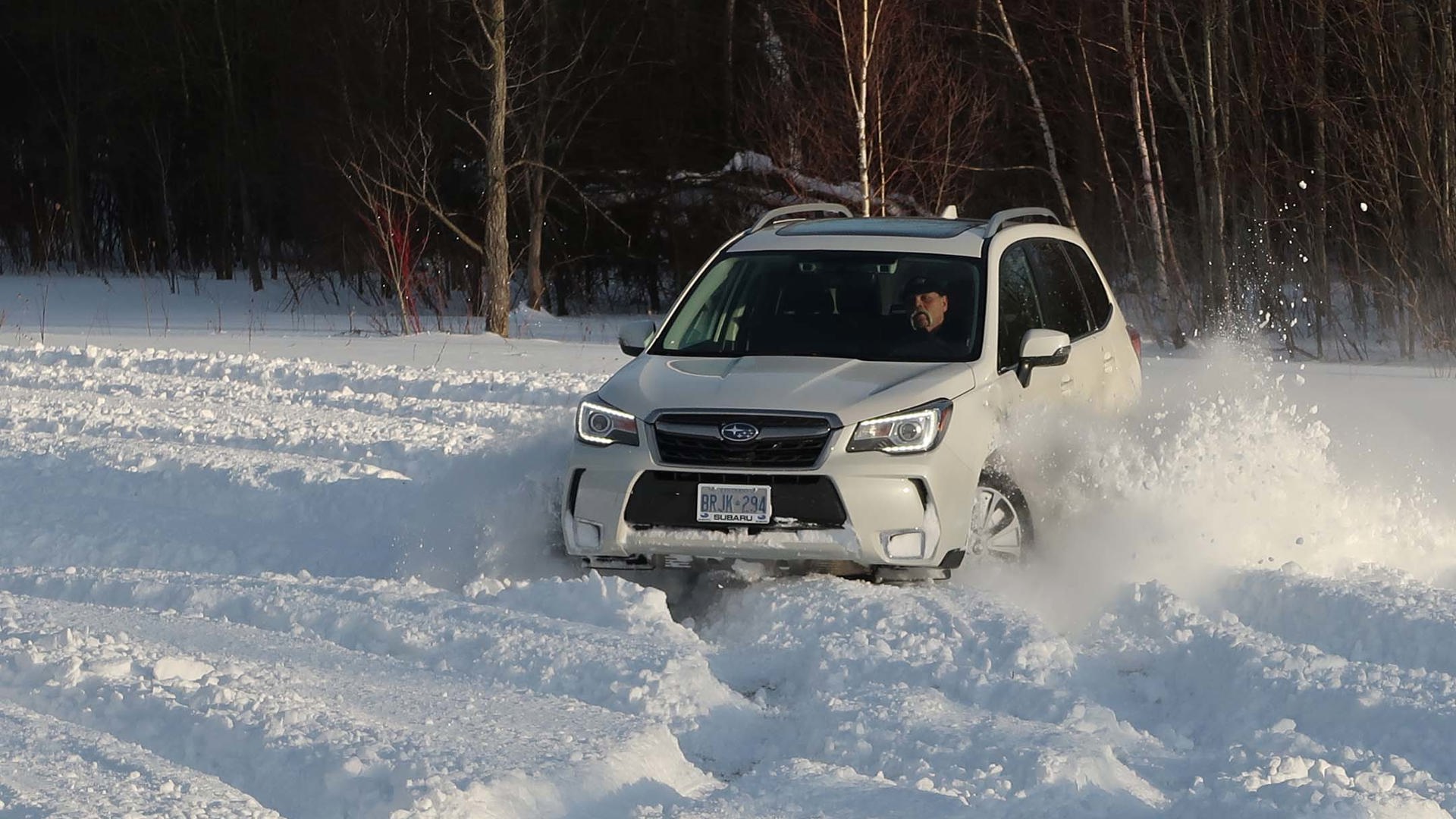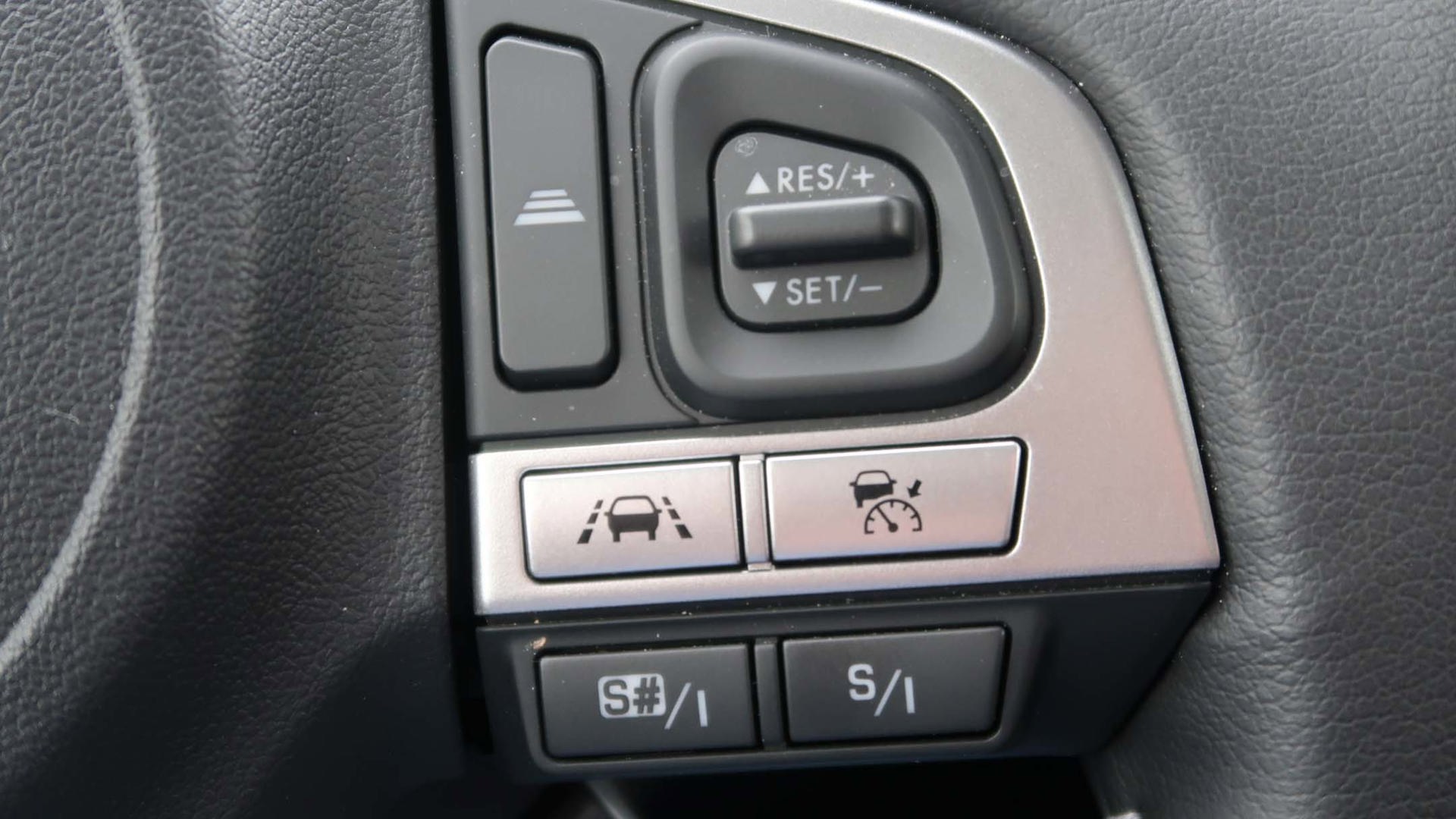 AutoTrader SCORE
AutoTrader SCORE
-
STYLING6/10
-
Safety8/10
-
PRACTICALITY9/10
-
USER-FRIENDLINESS8/10
-
FEATURES8/10
-
POWER9/10
-
COMFORT8/10
-
DRIVING FEEL9/10
-
FUEL ECONOMY7/10
-
VALUE7/10
When the Automobile Journalists Association of Canada (AJAC) opened the envelope to name the Subaru Forester as the 2017 Canadian Utility Vehicle of the Year, I wasn’t surprised. Okay, I was one of the judges, and I gave it high marks, but it’s deserved. I’ve always been very fond of this sport-ute, which gets a light styling refresh and some new features for 2017.
Honestly, we weren’t out playing in the snow for that long…
The base engine is a naturally-aspirated, 2.5-litre, horizontally-opposed engine, making 170 horsepower and 174 lb-ft of torque, mated to either a six-speed manual or continuously variable transmission (CVT), priced from $25,995 to $37,295.
My tester used the Forester’s other engine choice, a turbocharged 2.0-litre flat-four that churns out 250 ponies and 258 lb-ft of twist, priced from $33,995 to $39,495. That top price is for my tester, the Limited with Technology Package. There’s no chance to row your own gears here, as the 2.0XT, as it’s called, comes only with a CVT. But it’s a step up from the autobox used on the 2.5i, offering paddles so you can “shift” between as many as eight pre-set points on the transmission, along with two “Si-Drive” settings for sportier performance.
Subaru’s famous “symmetrical” all-wheel drive is included on all models. The name actually refers to the system’s mirror-image layout on either side of the vehicle’s axis, rather than equal torque to all wheels. The Forester sends 60 per cent of power to the front wheels under normal driving, but can divert up to 50 per cent front-to-rear when necessary. An X-Mode is included, which provides downhill descent control. It’s one of the best all-wheel systems on the market, improved even further with my tester’s torque vectoring, part of its optional Technology Package, although rather than actually redistribute torque, it gives a quick brake stab to one wheel when required. Along with a set of good winter tires—because even all-wheel is nothing without the appropriate rubber—my Forester went out to play in some deep snow in the field out back. Forester 1, snow 0.
When set in Normal mode, those 250 horses provide excellent acceleration and lots of highway passing power, but with a calm demeanor and linear throttle response that you’d expect and want in a family-oriented sport-ute. And while the sport settings on many rivals just make everything noisier, without any appreciable improvement, the Forester XT’s two Si-Drive settings dial up the fun factor. Throttle response picks up, the CVT “shifts” similarly to a regular automatic, and it does all the right stuff, such as downshifting on hard brake, and not upshifting in corners. Even if you don’t care for CVTs, you’ll want to give this one a try, because it’s very impressive.
The engine has that lumpy growl inherent to flat-fours, and while it’ll work fine on regular-grade gas, premium is recommended for maximum performance. Against a published combined city/highway rating of 9.5 L/100 km, I averaged 10.8. (Honestly, we weren’t out playing in the snow for that long…)
Overall, the Forester is pretty much everything you’d expect in a family “ute.” Steering is well-weighted, but light enough that it’s easy to spin around in tight parking lots, and there’s good feedback so you know what the tires are doing. It’s stable and secure on the highway, and takes corners with no more than the usual amount of sway expected from something with this much ground clearance.
New features on the 2.0XT Touring, the turbo’s base trim line, include revised headlamps and taillamps, new grille, new seat fabric, and blind-spot monitoring, while my Limited tester also added new auto-dimming mirrors, heated steering wheel and rear seats, driver’s power seat with memory, and SiriusXM Traffic and Travel link, which gives you weather, stock reports, and sports information, although that’s on a trial basis and requires a paid subscription after three months.
The optional Technology Package consists primarily of EyeSight, a suite of safety technologies based in a stereoscopic camera above the rearview mirror. Along with the new active torque vectoring, a package addition for 2017 is reverse automatic braking that slams on the stoppers if it thinks you’re going to back into something. The system includes adaptive cruise control, forward collision braking and throttle management, lane-keeping assist, and “lead vehicle start alert,” AKA You Shouldn’t Be Sitting Texting At The Light Anyway, which beeps when you’re not paying attention as the car ahead moves. Isn’t that what the horn in the car behind you is for?
Speaking of beeping, the Forester does a lot of it. The adaptive cruise control has three settings for the gap it keeps between you and the vehicle in front. But every time a car moves into that space, or the Subaru comes close enough to traffic to realize something’s ahead of it, the system beeps. It’s enough that my vehicle slows down to keep pace, and that I can see the car ahead of me, without the annoying soundtrack.
The Forester’s cabin is nicely finished, especially in my tester’s Limited trim with its leather upholstery, handsome accent stitching, and soft-touch surfaces. I like the simplicity of the large dials for the climate functions, but the temperature and mode show up in the quirky little screen that’s stuck on the top of the dash, which feels rather disconnected. The seats are comfortable and supportive, and there’s good legroom in the rear. Those rear seats fold flat, in an easy, single move to enlarge the cargo area, which comes standard with a cargo cover and, very nicely, a rubberized tray to handle the muddy stuff.
There are a lot of very good contenders in the crowded sport-ute market, and in comparison, the Forester isn’t the cheapest and it’s certainly not the flashiest. But its well-rounded performance and true all-wheel system are standouts, and it’s a must-test when you’re shopping. And if it’s a snowy day, so much the better.
| Engine Displacement | 2.0L |
|---|---|
| Engine Cylinders | H4 |
| Peak Horsepower | 250 @ 5,600 rpm |
| Peak Torque | 258 @ 2,000 rpm |
| Fuel Economy | 10.2/8.6/9.5 L/100 km, city/highway/combined |
| Cargo Space | 892 L; 1,940 L with seats folded |
| Model Tested | Subaru Forester 2.0XT Limited with Technology Package |
| Base Price | $39,495 |
| A/C Tax | $100 |
| Destination Fee | $1,675 |
| Price as Tested | $41,270 |
|
Optional Equipment
None
|
|










































